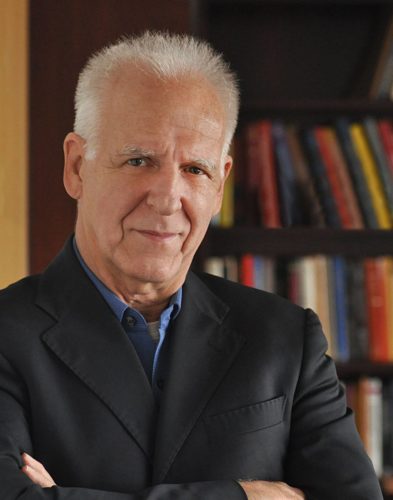
Two faculty members in the Texas A&M University College of Science — Dr. Marcetta Y. Darensbourg, distinguished professor of chemistry, and Dr. Ronald A. DeVore, distinguished professor of mathematics — have been elected to the National Academy of Sciences.
Darensbourg and DeVore are among the 84 new members and 21 foreign associates announced Tuesday (May 2) by the academy on the final day of its 154th Annual Meeting in recognition of their distinguished and continuing achievements in original research. Election to academy membership is a widely accepted mark of excellence in science and is considered one of the highest honors that a U.S. scientist can receive.
“The work of Drs. Darensbourg and DeVore has drawn international acclaim and recognition,” said Texas A&M President Michael K. Young. “Their induction into the prestigious National Academy of Sciences, a group that is one of the most respected in the world and includes other Texas A&M faculty, is certainly well-deserved, and Texas A&M takes great pride in their accomplishments and the honor it brings to our faculty and our university. We congratulate them on this most significant achievement.”
Darensbourg and DeVore are the first faculty members to earn the prestigious accolade while at Texas A&M since Distinguished Professor of Physics Dr. Marlan O. Scully was elected in 2001. Other past Texas A&M NAS inductees in addition to Scully include Dr. Dudley R. Herschbach (1967), Dr. Roger E. Howe (1994), Dr. David M. Lee (1991), Dr. Darwin Prockop (1991), Dr. Peter Rentzepis (1978), Dr. Ignacio Rodriguez-Iturbe (2010), and Dr. James E. Womack (1999), along with emeritus professors Dr. Perry Adkisson (1979) and Dr. Max D. Summers (1989). Of those Texas A&M 12, only half (Adkisson, Darensbourg, DeVore, Scully, Summers and Womack) were elected during their time at Texas A&M.
“We are delighted in this latest inclusion of two Texas A&M faculty members into the renowned National Academy of Sciences,” said Texas A&M Provost and Executive Vice President Karan Watson. “The work of Drs. Darensbourg and DeVore and their continued research has been recognized as among the best in the world. We are exceptionally proud of these great scholars, and celebrate their accomplishments and their highly distinguished scholarly efforts.”
Darensbourg, an internationally respected expert in synthetic and mechanistic inorganic chemistry and member of the Texas A&M Department of Chemistry faculty since 1982, is a leader in the development of methods to perfect hydrogen-powered fuel cell technology.
DeVore, a world-renowned expert in approximation theory, numerical analysis and signal processing, joined the Texas A&M Department of Mathematics faculty in 2007 as a visiting professor and was appointed in 2008 as the inaugural holder of the Dr. Walter E. Koss Endowed Professorship in Mathematics.
“Election to the National Academy of Sciences is a wonderful testament to the remarkable achievements of two of our most accomplished College of Science faculty members, Marcetta Darensbourg and Ron DeVore,” said Dr. Meigan Aronson, dean of the College of Science. “Both are exceptional scholars, and they display a common quality of generosity of spirit and intellect that is evidenced in the success of the students that they teach and mentor and in their thoughtful leadership within their departments and in the college.”
Darensbourg’s laboratory currently specializes in the novel approach of introducing Earth-abundant elements — iron, nickel and sulfur — into hydrogen-producing molecular catalysts intended to replace platinum as the kick-starter in these fuel cells. She is an inaugural fellow of the American Chemical Society (2009) as well as a fellow of the Royal Society of Chemistry (2014) and the American Academy of Arts and Sciences (2011), one the country’s oldest and most prestigious honorary learned societies.
“The call Tuesday morning came as a big surprise, but a really happy one,” Darensbourg said. “I am so very honored to have the research of myself and my coworkers, graduate and undergraduate students recognized in this way. The number one feeling on such an occasion is gratitude to the colleagues, past and present, who have provided inspiration and support. Collaborators such as Mike Hall and Don Darensbourg and a healthy dose of good competitors made this happen for me.”
DeVore is an inaugural fellow of the American Mathematical Society (2012) as well as a fellow of the Bulgarian Academy of Science (2007) and the American Academy of Arts and Sciences (2001). His hundreds of colloquia and conference presentations include plenary addresses for the AMS, the Society of Industrial and Applied Mathematics and the prestigious International Congress of Mathematicians — a coveted honor extended to only the top two if not one percent of mathematicians worldwide.
“It is a great pleasure to be recognized by this distinguished group of scientists,” DeVore said. “I am grateful for the light it shines on the high quality mathematics and science done at Texas A&M University.”
Dr. Christopher C. Cummins, Henry Dreyfus Professor of Chemistry at the Massachusetts Institute of Technology and a 2016-2017 Faculty Fellow of the Hagler Institute for Advanced Study at Texas A&M University affiliated with Texas A&M Chemistry, also is among this year’s honorees.
Darensbourg, a native of Kentucky, earned her doctorate in inorganic chemistry at the University of Illinois in 1967 and held faculty appointments at Vassar College (1967-69), State University of New York, Buffalo (1969-71) and Tulane University (1971-82) prior to beginning her independent career at Texas A&M, where was appointed a distinguished professor of chemistry in 2010. Although she was trained as an organometallic chemist with earlier research programs in transition metals, she began exploring the inorganic biocatalysts within hydrogen-controlling microorganisms for use in clean-energy initiatives about two decades ago. A pioneer in many areas of chemistry, Darensbourg became the first-ever female recipient in 1995 of the ACS Distinguished Service in the Advancement of Inorganic Chemistry Award, the society’s top annual honor for inorganic accomplishment. Most recently, she was recognized in March with the ACS Award in Organometallic Chemistry recognizing impact in that field.
“I am delighted that Marcetta was elected as a member of National Academy of Sciences,” said Dr. Simon W. North, professor and head of Texas A&M Chemistry. “It is a remarkable achievement and a testament to her meaningful impact on the field of inorganic chemistry. I have always considered Marcetta to be pillar of the department — a shining example of excellence in research, teaching, mentoring and service.”
In addition to authoring more than 230 refereed papers, Darensbourg has co-edited two specialty chemistry books, co-authored a freshman chemistry textbook and given plenary lectures at several prestigious international conferences. Her many career honors include the ACS Southwest Region Award (1998), the Distinguished Scientist Award for 2011 from the Texas A&M chapter of Sigma Xi and Texas A&M Association of Former Students Distinguished Achievement Awards in three separate categories: Teaching (1986); Research (1995) and Graduate Mentoring (2012). She is active in professional bodies beyond the ACS, including the National Science Foundation, the National Institutes of Health and advisory panels for the Petroleum Research Fund and National Academy of Sciences. She currently serves on the editorial boards for Inorganic Chemistry, Inorganic Syntheses and Chemical Communications as well as the advisory board for Encyclopedia of Inorganic and Bioinorganic Chemistry.
“Marcetta is a pioneer who has always done science the right way,” said Dr. François P. Gabbaï, a fellow expert in main group chemistry and holder of the Arthur E. Martell Endowed Chair in Chemistry. “Since I arrived at Texas A&M in 1998, I have seen her build her research program on hydrogenase mimics in the most systematic fashion, without ever losing sight of the molecular details of her chemistry. Her work has helped demonstrate that Earth-abundant metals such as iron can be incorporated in hydrogen evolution catalysts. Given how important hydrogen is to clean-energy research, her contributions have had a tremendous impact on the discipline, as reflected by the number of labs now involved in hydrogenase research worldwide. Her election to the National Academy of Science is most deserved!”
“I will also add that Marcetta is an outstanding role model, not only because of the way she does science, but also because of how she works with her students. Last but not least, Marcetta is the first Texas A&M chemist to be elected to the National Academy of Sciences for work done at Texas A&M. I view this as truly elevating for our entire department. Thank you, Marcetta, and most sincere congratulations!”
DeVore is globally recognized for his many contributions and achievements in a variety of mathematical areas, including applications of Fourier analysis, numerical analysis and approximation theory to problems in signal analysis and remote sensing. His research at Texas A&M is supported by external grants from several federal agencies and organizations, including the U.S. Department of Defense and the National Science Foundation, that total more than $1 million per year. He has published three research-level monographs and hundreds of articles in various peer-reviewed journals, earning him consecutive mentions to Thomson Reuters’ “Highly Cited Researchers” list in both 2015 and 2016.
A native of Detroit, DeVore earned his bachelor of science in mathematics at Eastern Michigan University in 1964 and his doctorate at Ohio State University in 1967. From there he taught at Oakland University and the University of South Carolina, where in 1999 he founded the Industrial Mathematics Institute (IMI), for which he served as director until 2005, the same year he was appointed Robert L. Sumwalt Distinguished Professor Emeritus. He has been honored with numerous career prizes and awards, including the Bulgarian Gold Medal of Science, the SPIE Wavelet Pioneer Award, an Alexander von Humboldt Foundation Research Award (2002) and a Texas A&M Association of Former Students Distinguished Achievement Award in Research (2013).
“Ron DeVore has been a leader in approximation theory, Fourier analysis, compressed sensing and related areas for many years,” said Dr. Emil J. Straube, professor and head of Texas A&M Mathematics. “His work at the interface of theory and application continues to define the cutting edge. His presence here not only brings much recognition to the department and the university, but equally importantly, it also contributes in a very significant way to the lively and stimulating research climate we strife to foster. Ron DeVore is most deserving of this signal honor, and we are fortunate to have him as a colleague.”
See the complete list of Texas A&M-affiliated National Academies members via the Dean of Faculties website at http://dof.tamu.edu/Awards-and-Honors/Faculty-Recognition-Lists/EXTERNAL-LISTS/NATIONAL-ACADEMIES.
# ##
About the National Academy of Sciences: The National Academy of Sciences is a private, nonprofit institution that was established under a congressional charter signed by President Abraham Lincoln in 1863. It recognizes achievement in science by election to membership, and — with the National Academy of Engineering and the National Academy of Medicine — provides science, engineering and health policy advice to the federal government and other organizations. To learn more, visit http://www.nasonline.org/.
About Research at Texas A&M University: As one of the world’s leading research institutions, Texas A&M is at the forefront in making significant contributions to scholarship and discovery, including that of science and technology. Research conducted at Texas A&M represented annual expenditures of more than $892.7 million in fiscal year 2016. Texas A&M ranked in the top 20 of the National Science Foundation’s Higher Education Research and Development survey (2015), based on expenditures of more than $866.6 million in fiscal year 2015. Texas A&M’s research creates new knowledge that provides basic, fundamental and applied contributions resulting, in many cases, in economic benefits to the state, nation and world. To learn more, visit http://research.tamu.edu.
###
Contact: Shana K. Hutchins, (979) 862-1237 or shutchins@science.tamu.edu
Or Keith Randall, News & Information Services, at (979) 845-4644 or keith-randall@tamu.edu
For more news about Texas A&M University, see https://today.tamu.edu/.
Follow us on Twitter at https://twitter.com/TAMU







